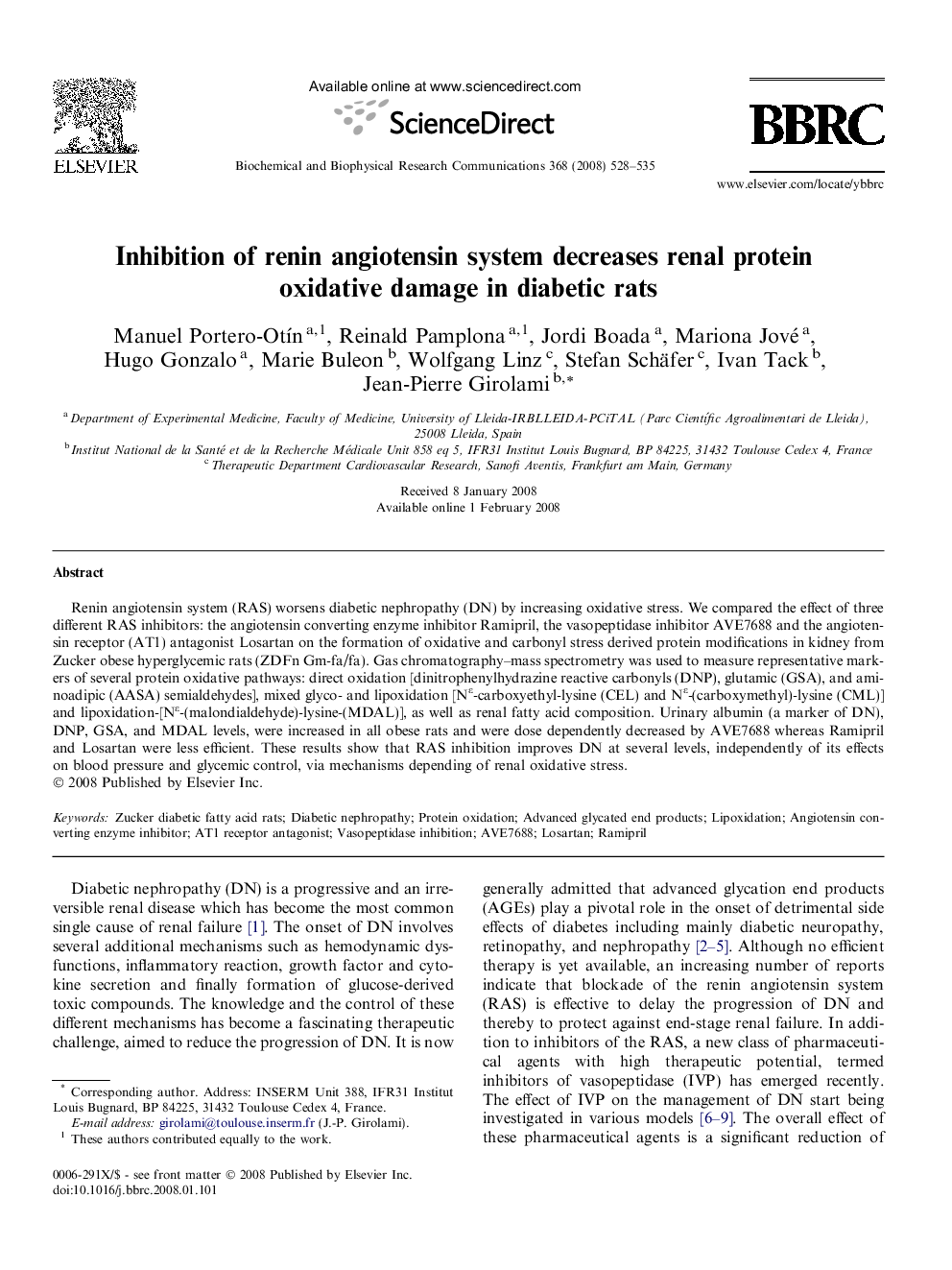| Article ID | Journal | Published Year | Pages | File Type |
|---|---|---|---|---|
| 1936168 | Biochemical and Biophysical Research Communications | 2008 | 8 Pages |
Renin angiotensin system (RAS) worsens diabetic nephropathy (DN) by increasing oxidative stress. We compared the effect of three different RAS inhibitors: the angiotensin converting enzyme inhibitor Ramipril, the vasopeptidase inhibitor AVE7688 and the angiotensin receptor (AT1) antagonist Losartan on the formation of oxidative and carbonyl stress derived protein modifications in kidney from Zucker obese hyperglycemic rats (ZDFn Gm-fa/fa). Gas chromatography–mass spectrometry was used to measure representative markers of several protein oxidative pathways: direct oxidation [dinitrophenylhydrazine reactive carbonyls (DNP), glutamic (GSA), and aminoadipic (AASA) semialdehydes], mixed glyco- and lipoxidation [Nε-carboxyethyl-lysine (CEL) and Nε-(carboxymethyl)-lysine (CML)] and lipoxidation-[Nε-(malondialdehyde)-lysine-(MDAL)], as well as renal fatty acid composition. Urinary albumin (a marker of DN), DNP, GSA, and MDAL levels, were increased in all obese rats and were dose dependently decreased by AVE7688 whereas Ramipril and Losartan were less efficient. These results show that RAS inhibition improves DN at several levels, independently of its effects on blood pressure and glycemic control, via mechanisms depending of renal oxidative stress.
